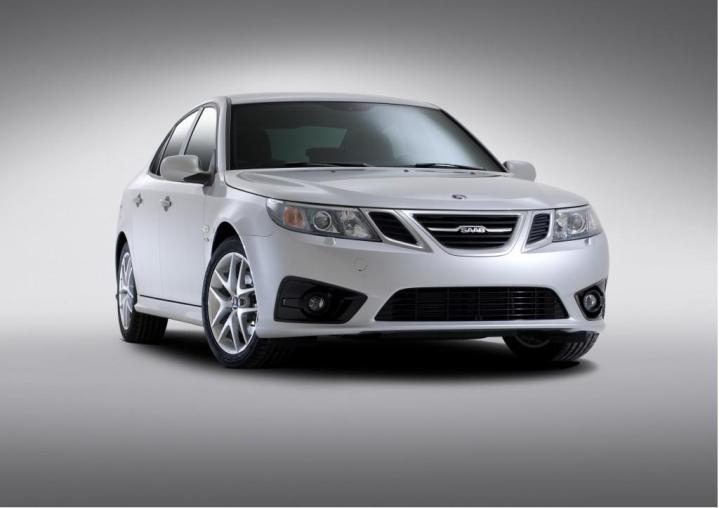
The streets of Trollhättan, Sweden are alight with jubilation, not that you’d be able to tell.
National Electric Vehicles Sweden (NEVS) has restarted production at Saab’s home plant. However, despite the “electric” in the company’s name, it seems that the cars it produces will be powered by gasoline, for now.
Despite previous reports that NEVS would move Saab production exclusively to China, a new Saab rolled off the assembly line today in Sweden. It was a 9-3 sedan virtually identical to the ones Saab was producing before it went bankrupt.
That is, except for a crucial difference.
The car wears the Saab name, but its badge lacks the traditional gryphon crest worn by all previous automobile produced in Trollhättan. Instead, the word “Saab” simply appears on a black background. Kind of low rent, don’t you think?
According to enthusiast site SaabsUnited, NEVS-built 9-3s will also get an exterior facelift. This first car was reportedly built to calibrate the production line and, perhaps, to prove that Saab is still alive.
“Alive” may be a relative term, however. The 9-3 was a dated design in 2011 – when Saab went under – so it will be hard to turn it into a competitive product now. NEVS may be more interested in supplying cars to the seemingly insatiable Chinese market than restoring Saab to its former glory, although only time will tell what its exact plans are.
Another mystery: What exactly are NEVS’ plans to build an electric version of the 9-3? For now, the cars will be powered by gasoline engines supplied by an unspecified carmaker.
As many major carmakers have found out, building an EV isn’t easy, especially when you have to resurrect a dead brand to do it. We’ll have to wait and see see if NEVS is able to accomplish either goal.
Would you buy a 9-3 from the reborn Saab? Tell us in the comments.


